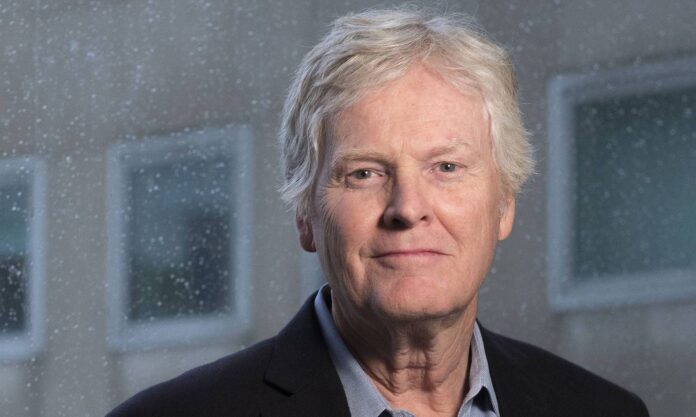Michael Young was 11 or 12 when he read in the book “The Wonders of Life on Earth” how birds know how and when to migrate because they are equipped with biological clocks that follow the rhythms of day and night. The allure of the mystery of that internal sense of time never left him.
Fifteen years later, Young was determined to decode the genetics of circadian rhythms – the cycles that manifest through biological substrates within living organisms that keep their cellular and organ systems working efficiently and on time – and the biological clocks that adapt animals’ behaviors to the Earth’s rotations. His breakthrough discoveries of the molecular mechanisms that control circadian rhythms won him the 2017 Nobel Prize in Physiology or Medicine.
Young, the Richard and Jeanne Fisher Professor at The Rockefeller University, will discuss his groundbreaking research in a talk titled “Genes Regulating Sleep and Circadian Rhythms,” part of the Maury Strauss Distinguished Public Lecture Series hosted by the Fralin Biomedical Research Institute at VTC.
Young’s talk will be presented virtually via Zoom at 5:30 p.m. on March 25. Attendees should register online in advance.
The series of free public lectures is named for Maury Strauss, a Roanoke businessman and longtime community benefactor who recognizes the value of bringing thought leaders and innovators in science, medicine, and health to share their work and vision with the Roanoke community.
“We’re incredibly fortunate to have a scientist of Dr. Young’s caliber, winner of science’s most prestigious recognition, as one of our distinguished public lecturers this year,” said Michael Friedlander, executive director of the Fralin Biomedical Research Institute and Virginia Tech’s vice president for health sciences and technology. “His ongoing study of circadian rhythms that began more than 40 years ago laid the foundation for research into the understanding of how problems with our internal clocks are associated with health issues, ranging from cognitive impairments and psychiatric illness to cancer – research that continues today, including here at the research institute.”
Young used a model organism that exterminators call a pest, but which proved to hold important secrets about humans, too: the fruit fly.
In the 1970s, using mutations in fruit flies discovered by other researchers, Young found that when a certain gene, called “period,” was deleted, circadian rhythm activity in the flies stopped.
Later, in his laboratory at the Rockefeller Institute, Young and his lab staff developed a device to measure the sleeping and waking activity of the flies – a box with electronic sensors that recorded when the flies inside were moving on a print readout. The scientists checked activity in mutant flies that lacked the “period” gene, then microinjected a string of DNA with the missing gene into the flies and checked their activity again. That comparison helped confirm that the presence or absence of the gene affected the flies’ circadian rhythms. Prior to that, no one had ever transplanted a gene to generate behavior.
That same genetic mechanism found in fruit flies is found across the animal kingdom, including in humans.
Young published the findings in Nature in 1984. The same year, two other researchers, Jeff Hall and Michael Rosbash at Brandeis University, published similar findings. The two teams would subsequently collaborate on the research project and divide tasks so they didn’t duplicate work.
The three scientists shared the Nobel Prize.
“All of this was revealed by genetics,” Young wrote in a biographical essay about his Nobel-winning discovery. “It wasn’t by anyone coming up with ideas to test; it was by admitting that we didn’t have the foggiest idea how the clock worked.”
Young and his lab now study the genes that cause insomnia in people. They have identified a gene variant in some people that affects their behavioral, physiological, and molecular circadian rhythms.
Young, who is also vice president of academic affairs at Rockefeller, was awarded the Wiley Prize in Biomedical Sciences, and the Shaw Prize in Life Science and Medicine. He’s a member of the National Academy of Sciences and a fellow of the American Academy of Microbiology.
To watch Young’s virtual lecture and submit questions, register online via the Fralin Biomedical Research Institute website to receive access to the Zoom link, or watch a live webcast.
— Matt Chittum

